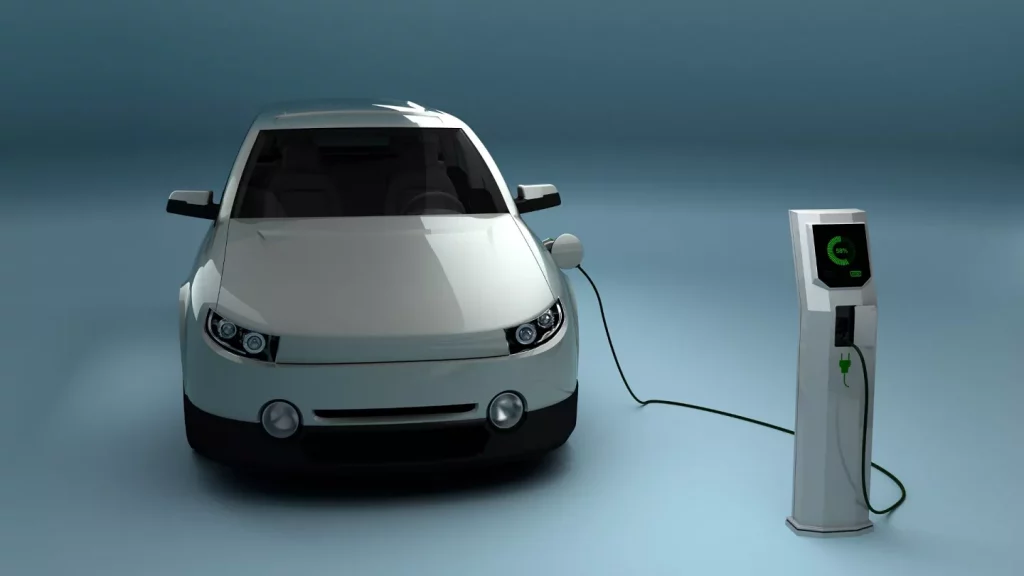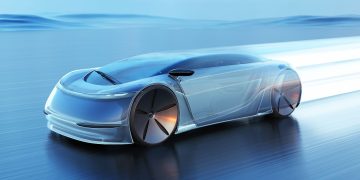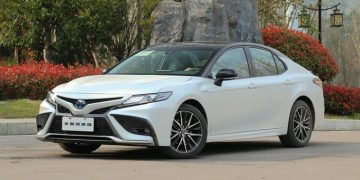Introduction: The Growing Issue of Noise Pollution
Noise pollution is an increasingly prevalent problem in urban areas, affecting millions of people worldwide. Cities, with their dense traffic, industrial operations, and high levels of human activity, are hotbeds for noise-related disturbances. According to the World Health Organization (WHO), prolonged exposure to excessive noise can have significant adverse effects on human health. Noise pollution is linked to a range of health issues, including hearing loss, stress, sleep disturbances, cardiovascular diseases, and reduced overall quality of life.
One of the primary sources of noise pollution in cities is traffic. Traditional gasoline and diesel vehicles generate significant noise through their internal combustion engines, tire friction, and exhaust systems. As urban populations continue to grow, so too does the number of vehicles on the road, exacerbating the noise pollution problem.
Electric vehicles (EVs) are emerging as a promising solution to reduce traffic-related noise pollution. As EVs operate without the internal combustion engine, they are much quieter than conventional vehicles. In this article, we will explore how the adoption of EVs can significantly reduce noise pollution, the health benefits associated with quieter urban environments, and how EVs can enhance urban livability.
Noise Pollution and Its Impact on Public Health
Before delving into the specific ways EVs can reduce noise pollution, it’s important to understand the broader issue of noise and its impact on health. Noise pollution occurs when sound levels exceed the threshold of what is considered safe or tolerable for human health. Common sources of noise pollution include traffic, construction, public transport, and industrial activities.
Research has shown that exposure to high levels of noise can have both immediate and long-term effects on health. Short-term effects may include increased stress, anxiety, and difficulty concentrating. Chronic exposure, however, has been linked to more severe health issues such as:
- Hearing Loss: Prolonged exposure to loud noises, especially from traffic, can lead to hearing impairment over time.
- Cardiovascular Diseases: Persistent noise pollution has been linked to higher levels of hypertension, increased risk of heart attacks, and stroke.
- Sleep Disruption: Noise pollution can interfere with sleep, leading to sleep deprivation, which in turn contributes to various health problems, including mental health issues, decreased immune function, and cognitive impairment.
- Mental Health Issues: Continuous exposure to urban noise has been associated with heightened levels of stress, anxiety, and depression.
With the growing urbanization of the world’s population, the issue of noise pollution has become even more pressing. Cities are often places of constant noise, and for many residents, this noise becomes a daily and unavoidable part of life. Reducing noise pollution is essential for improving public health and enhancing the overall quality of life in urban settings.
The Role of Electric Vehicles in Noise Pollution Reduction
1. The Quiet Nature of Electric Motors
The key difference between electric vehicles and conventional gasoline or diesel vehicles is the type of propulsion system. Traditional vehicles rely on internal combustion engines (ICE), which generate noise as they burn fuel and use mechanical components like pistons and valves. The sound generated by these engines, along with the noise from the exhaust system, tire friction, and mechanical vibrations, results in significant noise emissions. In contrast, electric vehicles use electric motors, which are far quieter.
Electric motors produce far less mechanical noise and, in many cases, are practically silent while in operation. The absence of an internal combustion engine means that EVs generate very little noise from the propulsion system, reducing overall traffic noise in urban areas. As more electric vehicles replace traditional gasoline-powered cars, the collective reduction in noise levels can lead to quieter and more peaceful cities.
While EVs are not completely silent—wind and tire noise still exist—these sources are less noticeable at lower speeds than the rumble of an internal combustion engine. The reduced engine noise, combined with advancements in soundproofing and tire technology, further lowers the noise levels of EVs.
2. The Impact on Urban Noise Levels
The cumulative effect of widespread EV adoption on urban noise levels is significant. According to studies, noise levels in cities with a high percentage of electric vehicles can be markedly lower than those in cities dominated by conventional vehicles. In a world where cities are plagued by the incessant hum of car engines and traffic noise, EVs offer a chance to create quieter, more livable spaces.
The implementation of EVs is particularly beneficial in areas with high vehicle density, such as city centers, residential neighborhoods, and near schools or hospitals. By replacing the noisy internal combustion vehicles with quieter electric alternatives, these areas can experience a noticeable reduction in background noise, contributing to a more peaceful and healthier environment for urban residents.
For example, EVs are especially effective in reducing noise in densely populated areas like downtown cores, where traffic congestion is common, and noise levels are high. The more EVs that are adopted in these urban centers, the quieter the streets will become, making it easier for people to concentrate, relax, and sleep.

3. EVs in Quiet Zones and Residential Areas
In addition to reducing noise in general urban areas, electric vehicles offer specific benefits in quieter zones, such as residential neighborhoods, parks, and areas surrounding schools or hospitals. These locations often suffer from the noise of passing traffic, which can disrupt the peacefulness of the environment and hinder the well-being of those living or working in the area.
EVs can make a substantial difference in these quiet zones. In neighborhoods with a high proportion of electric vehicles, residents are less likely to be disturbed by engine noise, particularly during night-time or early morning hours. This can lead to better sleep quality, reduced stress levels, and a higher quality of life overall.
Furthermore, EVs can improve the sound environment around sensitive areas, such as hospitals or schools, where noise pollution can have more severe effects on health and well-being. The reduced noise from EVs in these environments can contribute to better outcomes for patients in hospitals and enhance learning environments for students in schools.
4. Lower Noise Pollution at Low Speeds
EVs also have a distinct advantage in reducing noise pollution at low speeds. In urban areas, vehicles are often stuck in stop-and-go traffic, where the noise generated by conventional vehicles is most prominent. EVs produce far less noise in these conditions, particularly in the lower speed range. This is especially important in urban settings, where traffic jams and congested streets are common.
At low speeds, the difference in noise between an electric vehicle and a conventional gasoline-powered vehicle is even more noticeable. In city traffic, the lack of engine noise from EVs helps create a more serene atmosphere, reducing the cumulative noise that often overwhelms the senses in busy metropolitan areas. The smoother and quieter operation of EVs is particularly beneficial in residential streets, where noise from vehicles can disrupt the tranquility of the neighborhood.
5. Enhanced Public Transport with Electric Buses
Electric vehicles are not limited to private cars—they are also being adopted in public transportation systems. Electric buses, in particular, represent a significant opportunity to reduce noise pollution in cities. Buses are some of the noisiest vehicles on the road, especially diesel buses, which generate loud engine sounds and vibrations. Replacing diesel buses with electric buses can significantly reduce noise in urban areas.
Electric buses are much quieter, which can lead to quieter bus stations, streets, and neighborhoods. The benefits of electric buses are particularly important in cities where public transport plays a significant role in mobility. In addition to reducing traffic-related noise, electric buses can contribute to a more pleasant and peaceful experience for passengers, pedestrians, and residents in urban areas.
The Health Benefits of Reducing Noise Pollution
The reduction of noise pollution through the widespread adoption of electric vehicles offers numerous public health benefits. As mentioned earlier, chronic exposure to high levels of noise is linked to a range of health issues, including sleep disturbances, cardiovascular diseases, and mental health problems. By creating quieter urban environments, EVs contribute to improving the overall health and well-being of residents.
Some of the specific health benefits include:
- Improved Sleep Quality: Quieter neighborhoods lead to better sleep, which is essential for maintaining good mental and physical health.
- Reduced Stress Levels: Lower levels of noise contribute to reduced stress, which can help prevent stress-related illnesses such as hypertension and anxiety.
- Lower Risk of Cardiovascular Diseases: With less noise exposure, individuals are less likely to develop hypertension and other cardiovascular conditions.
- Enhanced Mental Well-being: Quieter urban environments are linked to lower rates of depression and anxiety, as people experience fewer disturbances and can enjoy more peace in their surroundings.
Enhancing Urban Livability with EVs
Beyond the direct health benefits, reducing noise pollution can significantly improve urban livability. A quieter city is a more pleasant place to live, work, and visit. The calming effect of reduced noise contributes to a higher quality of life, greater social interaction, and a more cohesive sense of community.
As cities strive to become more sustainable, livable, and healthy, the adoption of electric vehicles is a crucial step forward. EVs offer not only an opportunity to reduce carbon emissions but also to create a more harmonious and peaceful urban environment. By addressing noise pollution, EVs contribute to making cities more attractive places to live and fostering a greater sense of well-being for their inhabitants.
Conclusion: The Quiet Future of Urban Mobility
The benefits of electric vehicles in reducing noise pollution are clear. As EV adoption grows, cities can expect to see a significant reduction in traffic-related noise, improving the health and livability of urban environments. The quiet operation of EVs, coupled with their other environmental benefits, positions them as a key solution to urban noise pollution.
By embracing electric vehicles, cities can reduce not only their carbon footprint but also the noise levels that contribute to stress, sleep disturbances, and other health issues. In turn, this will help create more peaceful, sustainable, and healthy urban spaces that can support the well-being of residents for generations to come.











































